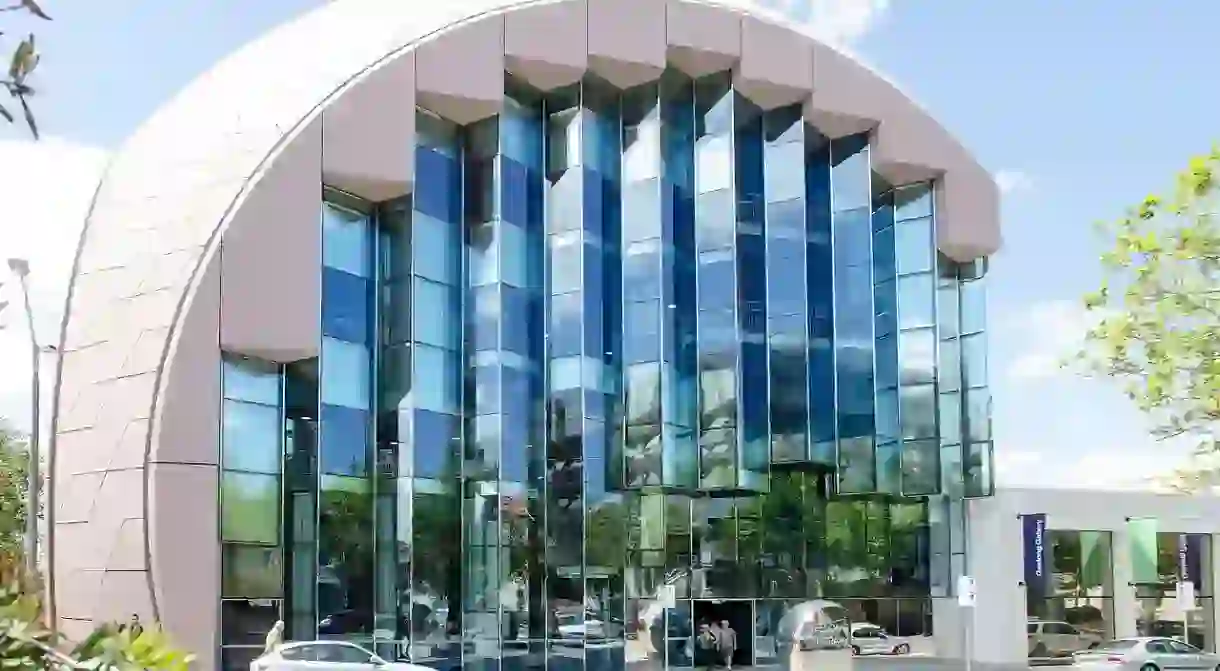An Art-Lover's Guide To Geelong

The arts and cultural scene in Geelong and the Bellarine showcases regional Victoria’s vibrant heritage through art and history. Visit galleries, performing arts centers, museums and public art spaces including Geelong Gallery, the National Wool Museum, Boom Gallery and the Geelong Bollard trail walk and discover the work of local artists and the story of Geelong.
Geelong Performing Arts Centre
Theater, University

Opened in 1981, the Geelong Performing Arts Centre has numerous spaces for performing arts, functions and events. Among the performance spaces are the 745-seat Playhouse Theater, the 325-seat intimate studio-style Drama Theatre, and Deakin’s Costa Hall which can seat 1,420 guests. In total there are nine spaces as well as a café and restaurant. Upcoming performances include Deakin University’s Disgraced,which sees a dinner party conversation take a turn for the worst as the topics of religion and race arise.
National Wool Museum
Museum
Discover the history and importance of the Australian wool industry, from the arrival of the First Fleet in 1788 to the birth of sheep farming in Geelong in 1835. Known for many years as the ‘wool centre of the world,’ it was only fitting that in 1988 the National Wool Museum was opened in Geelong to celebrate the legacy of the industry. Current exhibitions include Built for the Bush – Green Architecture of Rural Australia and War At Sea – The Navy in WWI.
Geelong Gallery
Art Gallery, Memorial

Established in 1896 the Geelong Gallery boasts a collection of over 6,000 pieces including 19th and 20th century Australian and European paintings, English porcelain, British art pottery, Australian silver and a collection of contemporary artwork. The Geelong Gallery also features work focused on the Geelong region, including Eugène von Guérard’s View of Geelong (1856). The gallery also houses many other iconic Australian paintings including Frederick McCubbin’s A bush Burial (1890) and Russell Drysdale’s Hill End (1948).
The Potato Shed
Opened in 2001, The Potato Shed is a performing arts and cultural centre used by Bellarine Secondary College, St. Ignatius College and the regional community. The complex includes a 250-seat black box theatre, studios, rehearsal spaces, a green room, dressing rooms and other theatre amenities.
The Geelong Heritage Centre
Library

Holding Victoria’s most extensive regional archive, the Geelong Heritage Centre holds 1.8 kilometres of public and private records. Located on level three of the new library, the centre holds artefacts – including documents, books, photographs and film – preserving the residents’ history of the Barwon Region.
Boom Gallery

Located on Rutland Street, Boom is a contemporary art and design gallery showcasing the work of emerging and established artists. Established in 2011 by Ren Inei and Kate Jacoby, Boom is a creative exhibition space with art and design galleries, an education and workshop complex, studio space and café. Upcoming exhibitions include Greenhaus Projects and The Geelong Botanic Gardens’ Form and Flora, Liam Snootle’s On the Riot Trail and Tiel Seivl-Keevers’ Infinite Memories.
Metropolis Gallery
Home to a wide range of contemporary Australian painting, limited edition prints, sculpture, art glass, jewellery and Indigenous art, Metropolis Gallery is a diverse space which often holds opening nights and artist talks. Exhibitions change monthly and this month you’ll find the work of artists including Peter Smales, Steve Salo, Sisca Voewert, Kim Barter, Adrian Lockhart, Lucy Hardie, and Linda Robertson on display. In October Metropolis Gallery presents Robert Ingpen’s Storybook Art featuring original illustrations from books such as A Christmas Carol, The Adventures of Tom Sawyer, The Poppykettle Papers, The Wonderful Wizard of Oz, The Night Before Christmas, and Treasure Island.
Geelong Bollard Trail Walk
Meet the characters who played an integral role in Geelong’s history as you stroll down the Waterfront from Limeburner’s Point to Rippleside Park. Commissioned by artist Jan Mitchell in 1995, the trail features over 100 bollards, including Matthew Flinders, Carrie Moore, Peter Lalor and a cast of servicemen and unique characters including Indigenous inhabitants. The walk takes approximately two hours one way and features a total of 48 sites.














